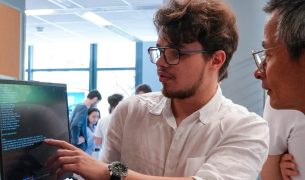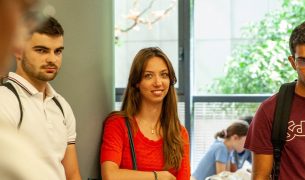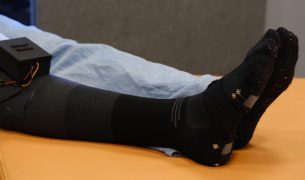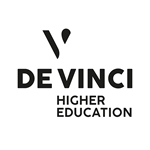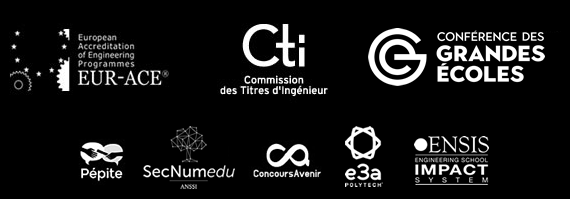Decentralized finance, cryptocurrencies, artificial intelligence linked to blockchain… Web3 will not stop revealing new concepts and functionalities to drive innovation and imagine new user experiences.
Understanding and positioning ourselves in the Web3 revolution means experimenting with new ways of using the decentralized Internet. Beyond the blockchain technology that underlies the Fintech field, it is the ability to create added value through decentralization that is at stake.
Spotlight on three real client class projects developed by students in their Fourth Year of their ESILV Master’s in Engineering.
Development of a dynamic risk quantification platform based on StableCoins
We were offered the opportunity to develop a dynamic risk quantification platform, focused on specific assets, the StableCoins.
Indeed, we had to take over the work of a team of engineers who had created the DefiScore tool, which had been abandoned for two years. So we worked on this tool that dynamically quantifies the risk of different lending platforms in stablecoins for the construction of investment strategies in the world of crypto assets.
This tool will be an indicator for the investor to know the risk he is exposed to when lending his stablecoins, intended to be borrowed.
This risk is represented by a score that takes into consideration several types of risk such as collateral, liquidity, centralization and technological risk.
To face the many challenges we were confronted with, we decided to separate our team into two divisions: a technology division and a methodology division.
The technology division worked on the update and the correct implementation of the code. While the methodology section was working on a manual of the mathematical methods and the functioning of the DefiScore tool so that a person without knowledge of the project could understand it and even reproduce the tool.
As expected by the partner, we updated the DefiScore platform and provided its methodology of it, the interactions with the different protocols of the blockchain allow us to obtain a coherent calculation of the score, however, this last one can still be improved and different scoring methods must be imagined.
Creating an ecological and ethical cryptocurrency
“Philea” is a project born from a will to combine new technologies and sustainable development. Indeed, this one is part of an ethical and future-oriented approach, since it plans to support the seventeen main principles supported by the UN for a better world by 2030.
To achieve these environmental and social goals, the “Philea” project relies on a very recent phenomenon which is the use of cryptocurrencies.
By setting up a very specific token that we created, it is possible to donate a part of each transaction to portfolios that support associations in line with our objectives.
We have searched for and implemented ways to make this new cryptocurrency real and effective for two semesters. As of today, the “Philea” token exists and is almost ready to be deployed.
Website development for Neurochain – AI at the heart of the Blockchain
We are a group of five students in our fourth year: three Fintech students and two IoT & Cybersecurity students working for Neurochain, a blockchain company.
Neurochain aims to provide a scalable blockchain based on proof of entailment and integrity which is characterized by entropy, enthalpy and integrity score.
Our goal in this company was to ensure the transition from Post-mainnet NCC is 1 pre-mainnet NCC. NCC is the main token of the company. We worked for Neurochain on different projects, mainly to code and test Neurochain’s product.
At the end of the project, we made two important websites for the company, redesigned the website and performed an audit on the proof of involvement and integrity consensus.














